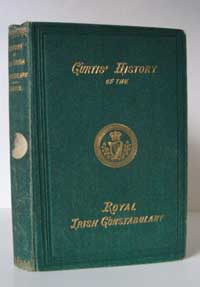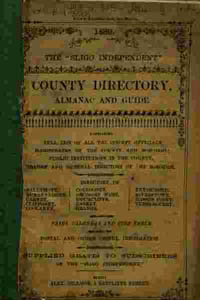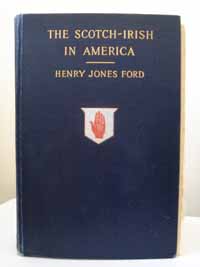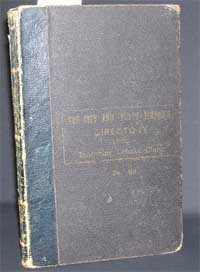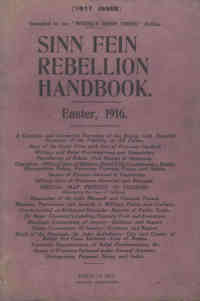Browse our range of products
Robert Curtis, The History of the Royal Irish Constabulary, 1871
What is inside?
Your Irish ancestry research may lead you to many unexpected resources worth exploring. One fascinating figure you may come across is Robert Curtis, a county inspector for the Royal Irish Constabulary (RIC) during the 1800s.In 1871, Curtis wrote a history of the force, now a valuable resource for understanding this vital part of Irish history. Read through our summary of this resource and its information, and find out how you can get your copy below.
What You Will Learn
Here’s a quick summary of the information you’ll learn in Robert Curtis’s The History of the Royal Irish Constabulary.- An overview of the Constabulary’s history, starting with its initial formation
- Details of the organisation and reorganisation of the Irish police up until the 1840s
- RIC successes, including events surrounding the Young Ireland Movement and William Smith O’Brien’s capture
- An overview of Fenianism in Ireland and the RIC’s response to the Fenian Rising
- Recognition of RIC accomplishments, including Queen Victoria granting the RIC use of the Royal prefix
About the Royal Irish Constabulary
The Royal Irish Constabulary was established by the Peace Preservation Act of 1814, a result of the efforts of Sir Robert Peel and the Irish Constabulary Act of 1822. The RIC’s purpose was to maintain peace everywhere in Ireland apart from Dublin, as the city had its own Dublin Metropolitan Police.Robert Curtis wrote about the Constabulary’s rich early history, but his text doesn’t extend to the later years of destruction during the Irish War of Independence. The Irish Republican Army (IRA) murdered hundreds of RIC men from 1919 to 1921. As a result, World War I veterans from Britain, known as Black and Tans and the Auxiliary Division, were recruited to reinforce the RIC.
Later, when the RIC disbanded in 1922, it was replaced by the Civic Guard in the Republic of Ireland. In Northern Ireland, it was the Royal Ulster Constabulary (RUC). In 2001, the Police Service of Northern Ireland (PSNI) replaced the RUC.
About This Resource
An Overview of the Constabulary’s History
This second edition of Robert Curtis’s The History of the Royal Irish Constabulary was published in London and Dublin in 1871 and dedicated to the Duke of Abercorn. It is republished here in a fully-searchable, electronic format.The History of the Royal Irish Constabulary begins with a description of the policing of Ireland before the Peace Preservation Act of 1814. This Ireland act formed the country’s first organised police force.
However, the Irish Constabulary Act in 1822 marked the beginning of the Royal Irish Constabulary. This act allowed for the establishment of a force in each of the Irish baronies, including a chief constable, inspectors general, and constables under the jurisdiction of the British Civil Administration at Dublin Castle. This force started with just over 5,300 service members, but by 1841, the number had increased to 8,600.
In 1836, Thomas Drummond reorganised the RIC, and it received its first code of regulations the following year. Life in the RIC was tough, the pay was poor, and constables were tasked with confronting large-scale civil unrest in Ireland.
Detailed Accounts of the Constabulary’s Successes
Curtis offers a descriptive analysis of the internal organisation and reorganisation of the police until the early 1840s. From 1842 onward, he turns to specific police actions that represent the first successes for the Constabulary.The Royal Irish Constabulary’s first notable success came at the height of Daniel O'Connell's Repeal Campaign and immediately after his death. Much civil agitation came in the wake of the Young Ireland Movement in 1848. The book portrays the events that culminated in William Smith O’Brien’s capture from the standpoint of the actions taken by the police.
Curtis touches on the rise of Fenianism in Ireland before recounting the events of March 5, 1867, the day of the Fenian Rising. The RIC stopped the Rising after infiltrating the Fenian Brotherhood with informers. After these events, Queen Victoria granted the force the ability to use the Royal prefix and insignia of the Most Illustrious Order of St. Patrick.
The History of the Royal Irish Constabulary concludes by recognising individual officers’ bravery during the 1867 Fenian Rising and the medals they earned at the Phoenix Park Depot.
A History Worth Exploring
Curtis’s text is not a complete history of the Royal Irish Constabulary, and it does not include some of the hardest travails the service faced. However, it is a fascinating account of the earliest years of an organised police force in Ireland written by a member of the Constabulary.This title is available in a downloadable format. Please click the link on your receipt to initiate a download.
Turn to the Experts for Irish History Resources
Robert Curtis's The History of the Royal Irish Constabulary is a remarkable resource on the history of the RIC during the 1800s. The Irish Family History Centre has many other electronic resources to help you study topics related to your Irish heritage.Purchase a copy of this book today, or browse our research store for other resources on the history of the Republic of Ireland and Northern Ireland including the Anglo Irish Treaty. No matter your need or curiosity, we’re here to help you paint a clear picture of your Irish ancestors’ lives through the generations.
Research Store.
Browse our range of products that can help trace your family ancestry and learn the story of your families history and past.
